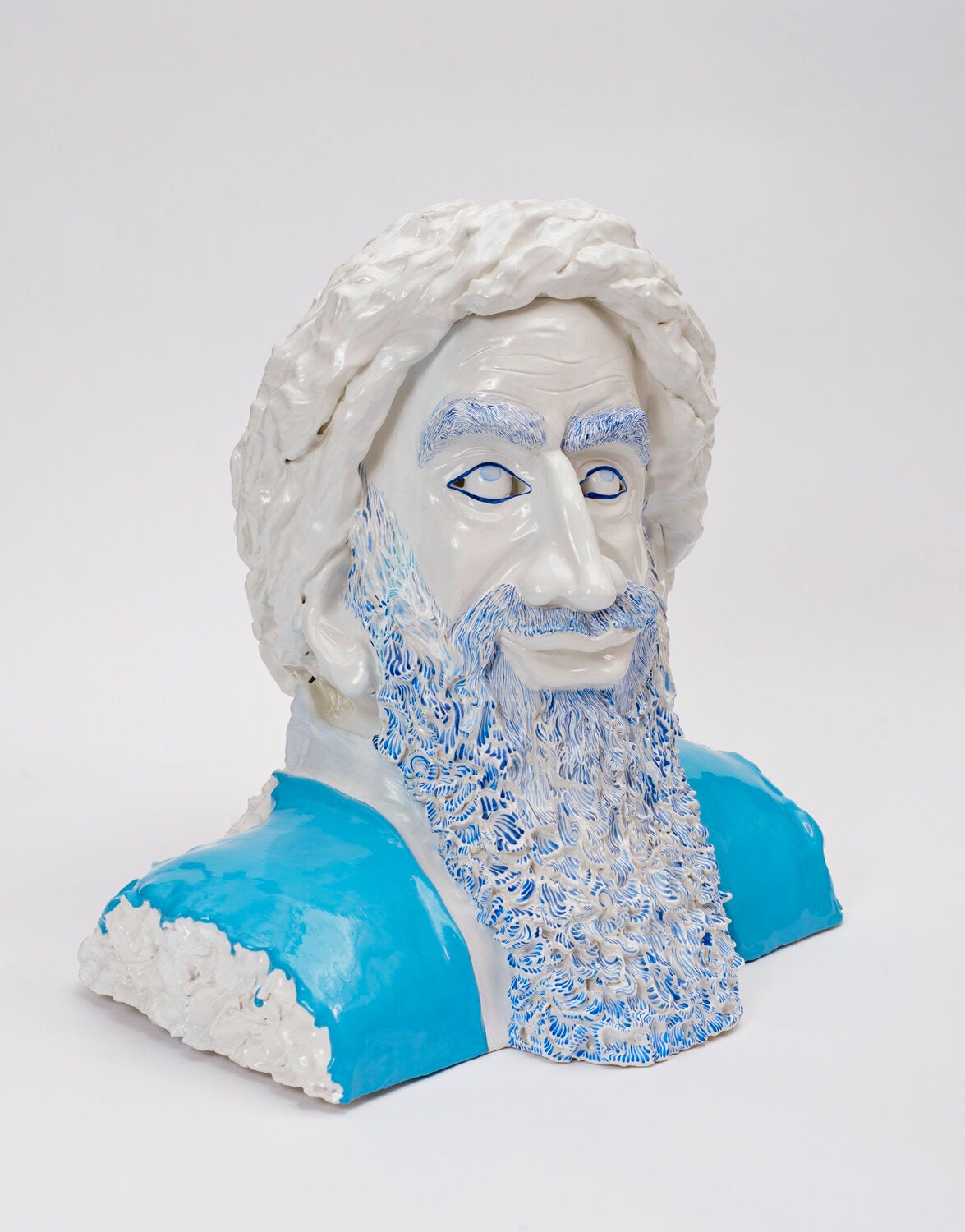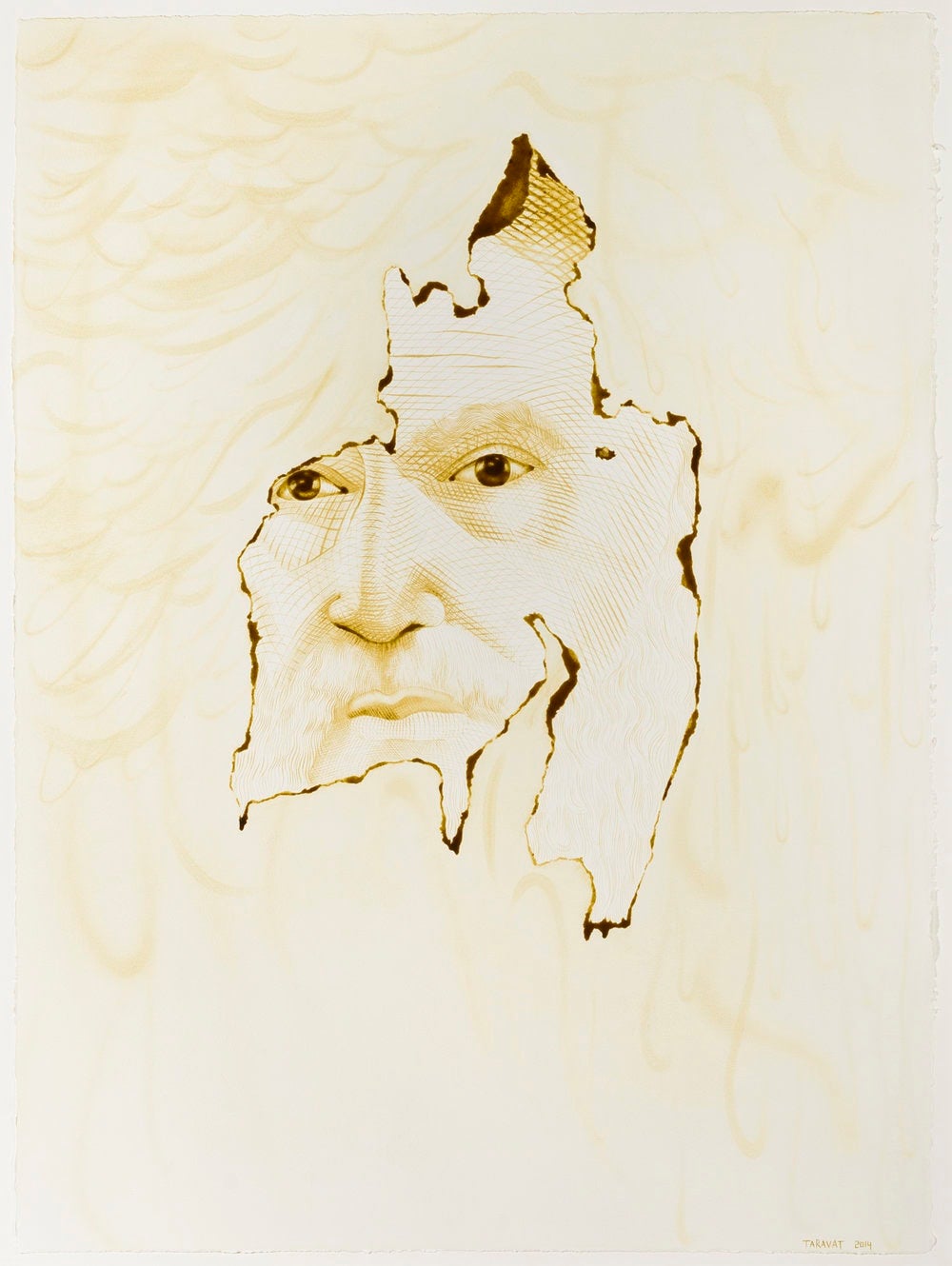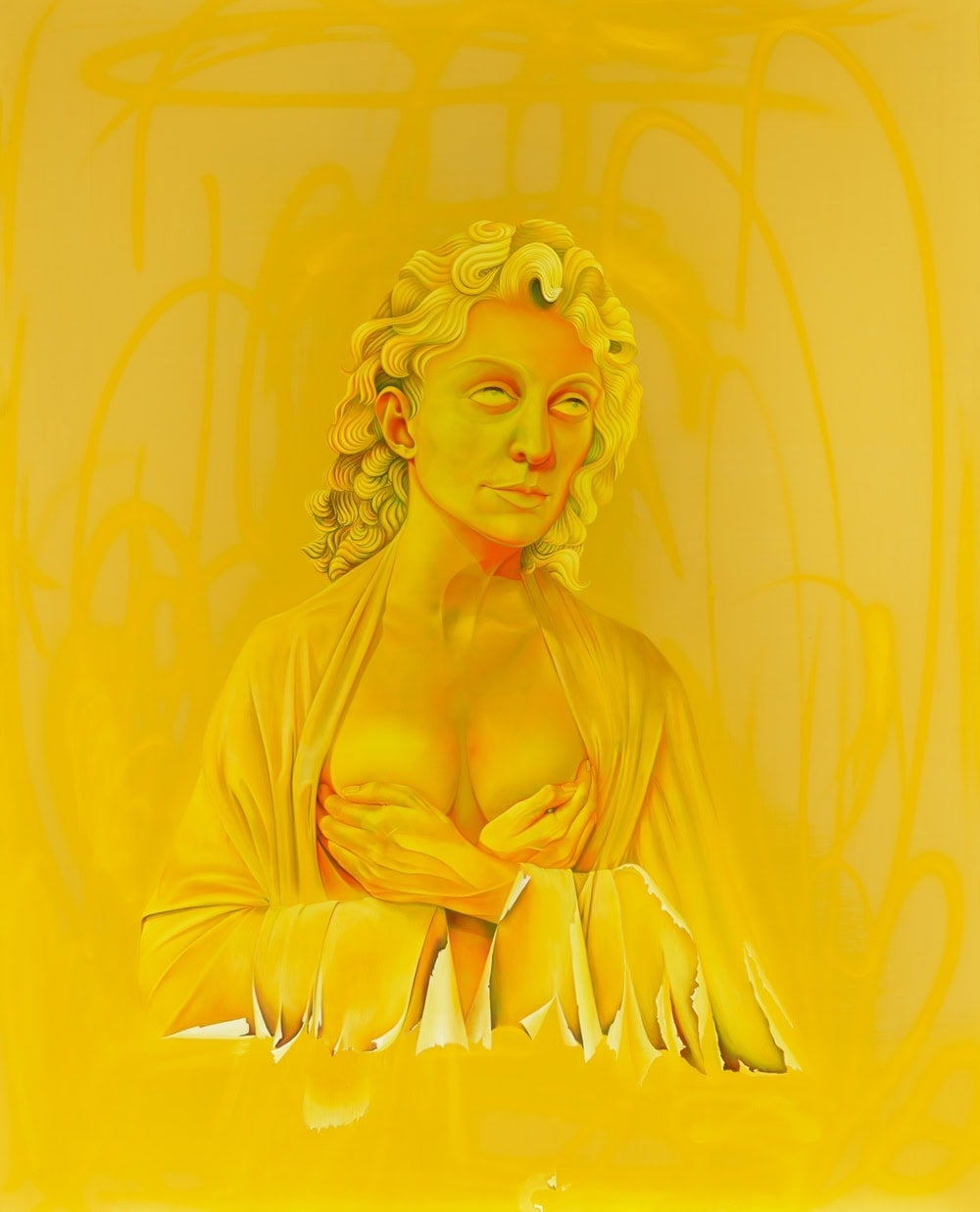
If there were only two things that might strike terror in the hearts of the average American, they would likely be Iran and drugs. So, Taravat Talepasand’s exhibition “Not an Arab Spring” begins from a place of wry wit and dry humor that may escape many viewers. For other viewers, the challenge may be greater given the fact that the one ubiquitous image of Ayatollah Khomeini is not necessarily as iconic to a younger generation of US viewers, but for Talepasand this is not an issue. Instead, she begins from a place of oscillating identity—an Iranian, born in America, now producing works that constantly call into question the strictures and restrictions of culture and identity.
Of course, this can be a challenging path to tread, and in this exhibition, Talepasand does not push the envelope as far as she might. Instead, using egg tempera—a medium not usually associated with revolutionary actions—among other materials, she explores ideas and images that mesh feminism, politics, personal history, and identity into a tightly controlled exhibition.
The exhibition contains nine works. Three depict Khomeini, while another four appear to be self-portraits. Khomeini or Bust is literally a larger-than-life porcelain bust of the former leader, quite beautifully rendered, with delicate patterns painted into his beard. The exhibition’s checklist includes hits of LSD among the materials, which upon closer examination form part of his pupils. This type of transgression, also seen in the hash oil of Lioninoil I and Lioninoil II, is difficult to situate simply because viewers take the substances’ existence on faith, the frisson relying on the participatory “haze” as if it were an effect of the material’s psychotropic properties.

Talapasand’s works are the most effective when she examines the complexities of her own duality. She constructs a nuanced depiction of her own sense of displacement as an American-born Iranian. In Andarooni Birooni (Insider Outsider), Talepasand shows herself in a richly embroidered hijab, while in Sanctioned I her head is bare and she covers her breasts with her hands. Each represents a pole of her identity, the traditional contra the modern, the culture of identity versus the contemporary.
Perhaps the most unexpected element of Talepasand’s exhibition is its myriad references to classicism, in both her materials and her subject matter. It is as if the visceral nature of her works is mitigated, in part, by the beauty of her surfaces. Somehow, in Khomeini and Lioninoil I, both of which are depictions of the late Khomeini, Talepasand’s representational imagery is so delicate as to render the works almost elegant. The danger here is that the deeper elements of the pieces themselves are lost in the ornateness of the surfaces, if that is possible. This is a conundrum that any artist would be lucky to have. In Talepasand’s case, what results are works that are grounded in deeply significant issues—The Corrupt Minority, for example, depicts a woman covered in what looks like oil. This echoes the many ideas of oil as power and oil as a currency, but somehow in the work itself it feels as if the subject, with her wide-brimmed hat and long hair, has stepped straight out of Laurel Canyon in the late 1960s.

Time and again, Talepasand—who received her MFA from the San Francisco Art Institute (2006) and her BFA from the Rhode Island School of Design (2001)—proves how hard her works can hit, and how humorously and how significantly she challenges the cultural and social structures and strictures of a society she is within and without at the same time. In “Not an Arab Spring” viewers find a softer, more restrained artist, one who teases the edges of these questions, showing her talents but not necessarily sharing the extent to which she has been dismantling the distinctions between “East” and “West.” This depth is revealed in her earlier work, which can be viewed on the gallery’s website, and is definitely worth exploring. It is said more quietly here.




